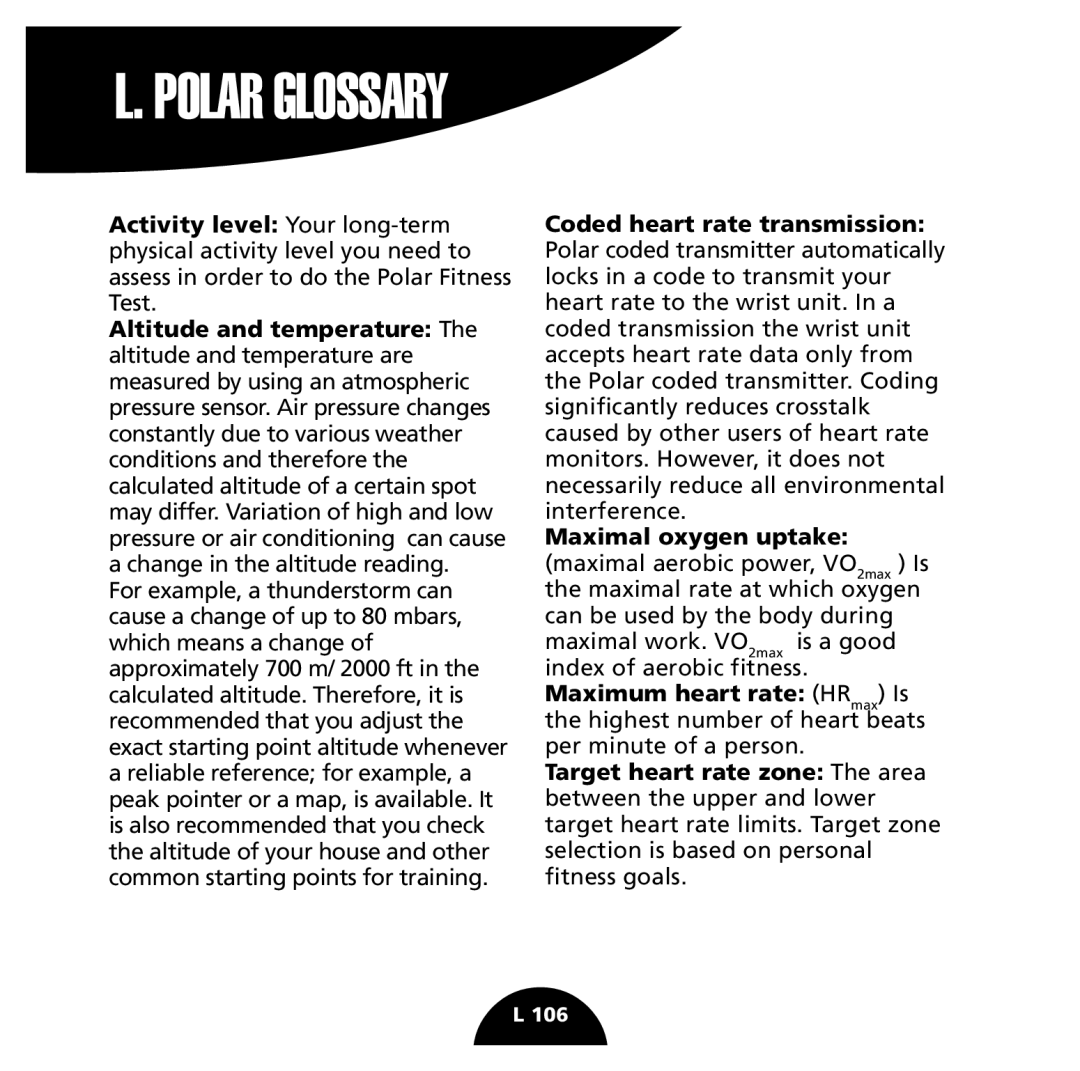
L. POLAR GLOSSARY
Activity level: Your
Altitude and temperature: The altitude and temperature are measured by using an atmospheric pressure sensor. Air pressure changes constantly due to various weather conditions and therefore the calculated altitude of a certain spot may differ. Variation of high and low pressure or air conditioning can cause a change in the altitude reading.
For example, a thunderstorm can cause a change of up to 80 mbars, which means a change of approximately 700 m/ 2000 ft in the calculated altitude. Therefore, it is recommended that you adjust the exact starting point altitude whenever a reliable reference; for example, a peak pointer or a map, is available. It is also recommended that you check the altitude of your house and other common starting points for training.
Coded heart rate transmission: Polar coded transmitter automatically locks in a code to transmit your heart rate to the wrist unit. In a coded transmission the wrist unit accepts heart rate data only from the Polar coded transmitter. Coding significantly reduces crosstalk caused by other users of heart rate monitors. However, it does not necessarily reduce all environmental interference.
Maximal oxygen uptake: (maximal aerobic power, VO2max ) Is the maximal rate at which oxygen can be used by the body during
maximal work. VO2max is a good index of aerobic fitness.
Maximum heart rate: (HRmax) Is
the highest number of heart beats per minute of a person.
Target heart rate zone: The area between the upper and lower target heart rate limits. Target zone selection is based on personal fitness goals.
L 106
